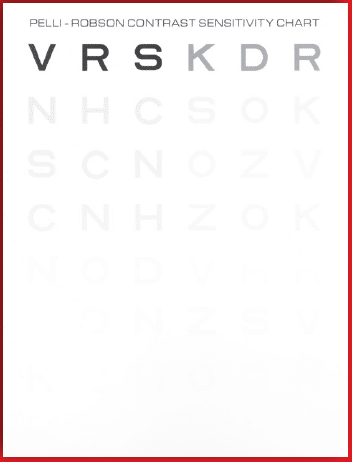
Berkeley Rudimentary Vision Test | Ian Baily – Precision Vision
IN THE NEWS
Precision Vision is proud to partner with Dr. Bailey and the University of California–Berkeley to offer the Berkeley Rudimentary Vision Test to our customers. Thanks to Dr. Baily, this new test now provides clinicians with a simple, efficient test of spatial vision that is standardized. Precision Vision is committed to industry standardization and aiding in the development of visual acuity measurement. We look forward to serving you. More on this below.
New Methods to Measure Lowest Visual Acuity
For people with extremely poor vision, assessing visual acuity in the past has been mostly a matter of subjective analysis – once a patient can no longer read the top line of a Snellen chart, clinicians resorted to categorizing vision as counting fingers, hand motion, or light perception. However, there are no standardized procedures or testing distances for these tests. But now, thanks to Ian Bailey, OD, MS, FAAO, the Berkeley Rudimentary Vision Test overcomes those obstacles and provides clinicians with a simple, efficient test of spatial vision. Under development since 2007, Dr. Bailey and colleagues developed the Berkeley Rudimentary Vision Test because “we needed a standardized method, a protocol by which you can systematically take measurements, beyond the limits of the letter chart.”
The test itself was developed after the World Blind Cricket Council asked Dr. Bailey to join an advisory committee on the rules and methods that were being used to classify the vision of athletes participating in Blind Cricket competitions. He first developed a PowerPoint presentation to systematically quantify acuity beyond the typical charts and over the following year “we took patients with very low vision and measured their acuity and abilities with this computer presentation. But we quickly realized we needed to have something that didn’t rely upon a computer display or electricity – something we could use in the developed world as easily as in the Developing World countries,” Dr. Bailey said. Working in with Hasan Minto, OD, FAAO, and A. Jonathan Jackson, Ph.D., MCOptom, FAAO, the group developed a set of three card pairs—a single tumbling E card pair, a grating acuity card pair, and a basic vision card pair. The way the cards work is simple and standardized, Dr. Bailey explained.
“Our protocol is that you test at one meter with the Tumbling E. If the patient cannot recognize the largest Tumbling E at that distance, we immediately move to 25 cm, and all subsequent testing is done at 25 cm, first with Tumbling Es, then with gratings and the basic vision tests,” he said. The test has been used by optometrists, ophthalmologists and ophthalmic nurses at schools for the blind in Nigeria, where the clinicians found the cards “very intuitive,” Dr. Bailey said. In addition, the International Paralympics and International Blind Sports Association are now using the Berkeley Rudimentary Vision Test for their testing.
Precision Vision is proud to partner with Dr. Bailey and the University of California–Berkeley to offer the Berkeley Rudimentary Vision Test to our customers. As Dr. Bailey said, “clinicians should abandon counting fingers and hand motion now that there’s an easy, reliable, standardized test available” that includes 13 steps to grade vision at levels lower than 20/2000. More on the test itself can be found at http://journals.lww.com/optvissci/toc/2012/09000
PRODUCT PROFILE
BRVT The Berkeley Rudimentary Vision Test
The Berkeley Rudimentary Vision Test (BRVT) was developed to enable efficient and easy measurement of visual acuity beyond the limits of the letter chart. It features three card-pairs. Each card-pair consists of two 25 cm square hinged cards so each card-pair has four target surfaces. Catalog No. 4500.
40 cm (16 in.) SK Read Eye Chart
The SK Read Test Two Card Set was developed to assess the reading performance of English speaking adults who may be encountering central or paracentral scotomas. It’s designed to allow words to be easily confused and facilitate the verbalization of mistakes encountered while reading. The pattern of verbalized mistakes can help to differentiate left- and right-sided scotoma interference. Blocks of text range in size from 8 M units down to 0.4 M units. Each block of text contains 6 single letters, 1 two letter word, 2 three letter words, 3 four letter words, 3 five letter words, and 1 six letter word. Words were chosen from the 1000 most commonly used words in each respective language. The use of single letters facilitates misidentification of two letter words as a single letter. Words that could stand alone with a letter missing from the beginning or end of the word were specifically included. No meaning is present in the text. Available in English (Cat No. 4201) and Italian (Cat No. 4208).
CONTACT US
Share Your Stories With Us!
Precision Vision® wants to hear your stories. Tell us how you are impacting the industry. Do you have an interesting story to share about a Precision Vision® product? Contact us and we may use it in a future newsletter.




